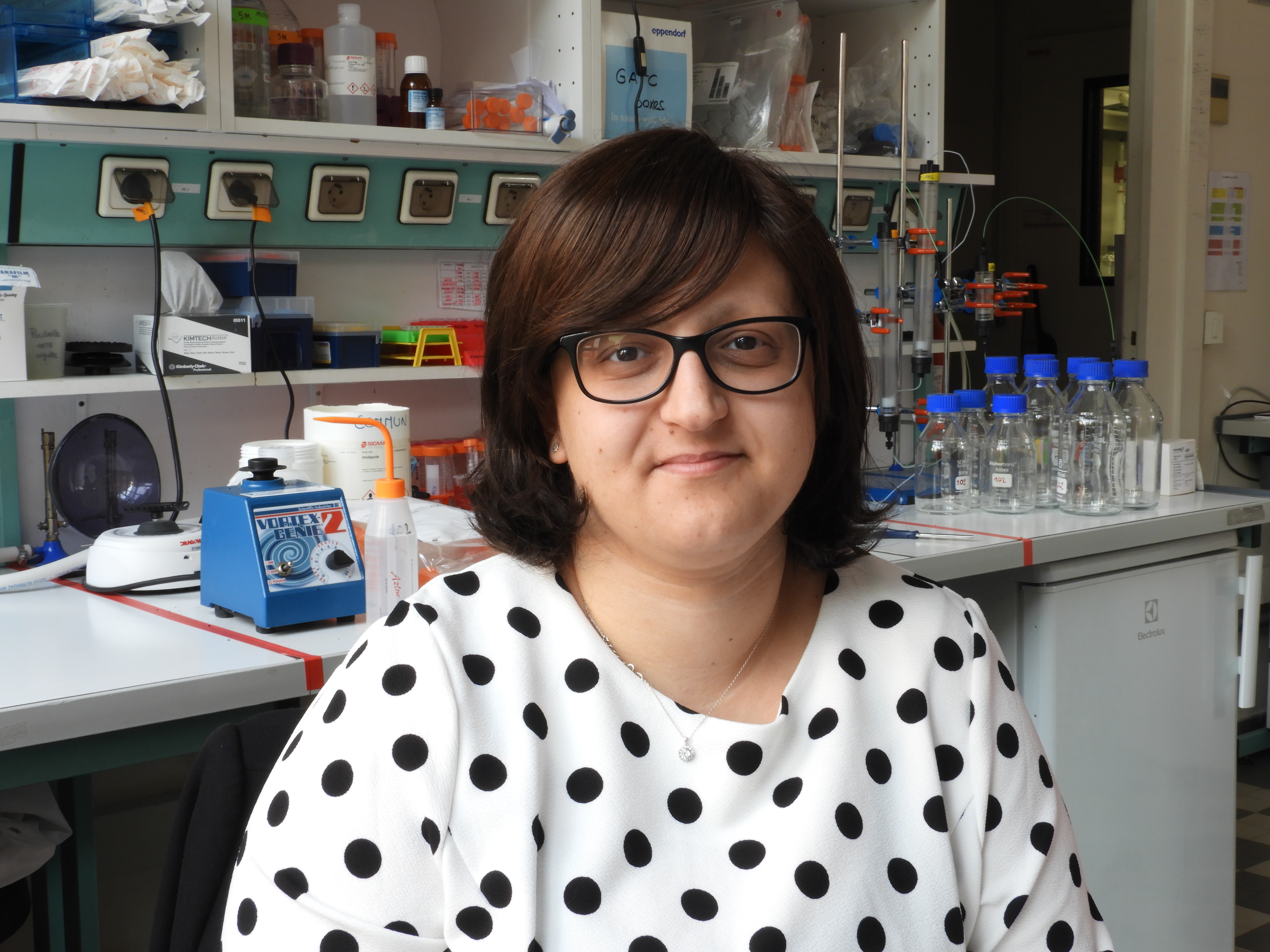Laboratory of microbial genetic expression, IBPC, CNRS, UPD, USPC Paris,France Modulation of the HIV nucleocapsid dynamics finely tunes its RNA-binding properties during virion genesis. Nucleic Acids Research, Volume 46, Issue 18, 12 October 2018, Pages 9699–9710 https://doi.org/10.1093/nar/gky612
Assia Mouhand, Anissa Belfetmi, Marjorie Catala, Valéry Larue, Loussiné Zargarian, Franck Brachet, Robert J. Gorelick, Carine Van Heijenoort, Gilles Mirambeau, Pierre Barraud, Olivier Mauffret & Carine Tisné
Cv
Assia Mouhand, 27 years old, obtained a bachelor’s degree in chemistry / biochemistry , a Master’s degree "Structural and Functional Engineering of Biomolecules". She recently completed her thesis in the laboratory of Biological Cristallography and NMR (Univertsity of Paris Decartes) and the Laboratory of Microbial Genetic Expression (Institute of Physico-Chemical Biology – Paris) under the supervision of Dr. Carine Tisné. Her work published in Nucleic Acid Research focused on the NMR study of HIV-1 nucleocapsid protein, alone and interacting with its different partners during the viral cycle, in order to understand its role in the HIV assembly and budding. Her work highlights the roles of intrinsically disordered proteins (IDPs) in many biological processes. In this context, her publication presents a cooperation of intrinsically disordered domains and structured domains, constituting the nucleocapsid protein, for the recruitment of their respective partners and the function of these unstructured domains during assembly and budding of virions. She gets recently a post-doctoral position in Dr. Pau Bernado’s team, at the Center of Structural Biochemistry in Montpellier to study with Dr. Nathalie Sibille, function of C-terminal domain (which is intrinsically disordered) of G-protein coupled receptors in cell signal induction.
Contact
This email address is being protected from spambots. You need JavaScript enabled to view it.
Institut de Biologie Physico-Chimique
Laboratoire d'Expression Génétique Microbienne - CNRS UMR 8261
75005 Paris
Abstract
During HIV-1 assembly and budding, Gag protein, in particular the C-terminal domain containing the nucleocapsid domain (NCd), p1 and p6, is the site of numerous interactions with viral and cellular factors. Most in vitro studies of Gag have used constructs lacking p1 and p6. Here, using NMR spectroscopy, we show that the p1-p6 region of Gag (NCp15) is largely disordered, but interacts transiently with the NCd. These interactions modify the dynamic properties of the NCd. Indeed, using isothermal titration calorimetry (ITC), we have measured a higher entropic penalty to RNA-binding for the NCd precursor, NCp15, than for the mature form, NCp7, which lacks p1 and p6. We propose that during assembly and budding of virions, concomitant with Gag oligomerization, transient interactions between NCd and p1-p6 become salient and responsible for (i) a higher level of structuration of p6, which favours recruitment of budding partners; and (ii) a higher entropic penalty to RNA-binding at specific sites that favours non-specific binding of NCd at multiple sites on the genomic RNA (gRNA). The contributions of p6 and p1 are sequentially removed via proteolysis during Gag maturation such that the RNA-binding specificity of the mature protein is governed by the properties of NCd.




